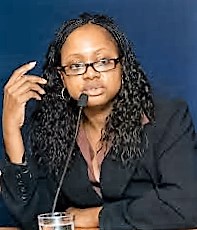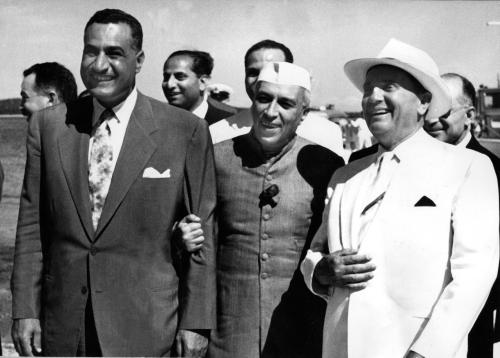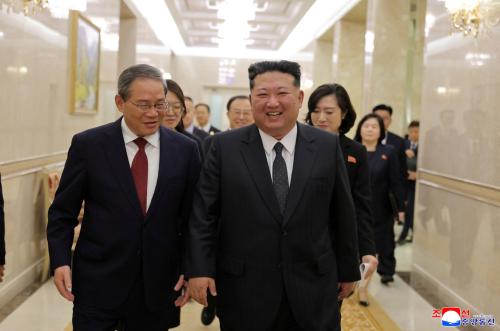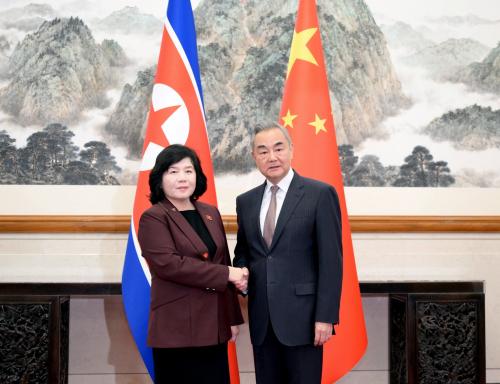I have had the pleasure to work in the areas of nuclear, chemical, and biological weapons nonproliferation and disarmament for all of my career. I have witnessed and been a part of U.S. delegations to negotiations, review conferences, implementation bodies, and treaty ratification processes. Throughout those years, there has been at least one constant: the very small representation of people of color in professional roles. Fortunately, while still very small, there are young people of color entering the field—in speaking with some of them, it’s clear to me that there are many reasons it remains hard to diversify the field.
A number of recent articles have described the lack of women and people of color in national security, including WMD nonproliferation. Fewer people of color means fewer opportunities for different perspectives on high-stakes security issues that affect so many people around the world. For example, in dealing with the North Korea WMD challenge, among others, it is important to understand the relevant cultural context, including how U.S. positions may impact a country’s perception of us in unanticipated ways. WMD issues, which are global issues, should have a more global representation of decisionmakers.
The challenges facing aspiring leaders
My own constant is a life-long desire to work in public service. I am from New York, and my first government jobs were in New York City then the New York state government, and I moved to Washington as soon as I could and landed a position as a Presidential Management Fellow at the Department of Defense. After I attended a meeting on strategic arms reduction, my interest in weapons of mass destruction came fast and, as they say, from left field.
It did not occur to me, at the time, that there would be very few people of color in the field. And as my career has progressed, I’ve taken note. Why are there so few people of color in this field, and what is it that led the handful of people of color who are here to join? Most importantly, how can we continue to cultivate people of color to have an interest in peace and security to help diversify the perspectives behind policy choices—policy choices that impact the security of all Americans and others around the world?
“I stumbled into the field of nuclear weapons issues.”
Lovely Umayam is a lovely young woman (pardon the pun), who is from the Philippines and first-generation immigrant. She works at the Stimson Center on nuclear security. Like me, her interest in the field of nuclear nonproliferation and security was not anticipated. A college professor encouraged her to go more in-depth into the nuclear policy field as part of a related course, ultimately leading her to the Monterey Institute of International Studies, where she continued her studies in nuclear nonproliferation.
In my interview with her, Lovely made clear that she “stumbled” into the field of nuclear nonproliferation and would not be in the field without the influence of a mentor and others’ encouragement. She calls her path a “winding road”—both in finding the issue area and in sticking with it.
“Arms control is really about politics and at the core of those relationships [is] security.”
Derrick Holmes is a 27-year-old African-American man who is a new national security consultant at the Hudson Institute. He recently graduated from college, and after several months of trying, finally feels that he is entering, professionally, the field of nuclear nonproliferation.
Derrick first became interested in nuclear weapons issues after reading a tweet about the timeline of a nuclear weapon launch. While he had not given nuclear weapons much thought before, he dove into studying the topic.
Derrick said he wonders whether he should be thinking about other career choices—when he attends panels on nuclear nonproliferation, he does not see people of color on stage. He does not see himself reflected in the field, which can be discouraging. Meanwhile, none of Derrick’s friends are interested in the same topic—in fact, they wonder why he is interested in something that seems so esoteric. Why not focus on an issue that impacts him and his community more specifically and more directly, like civil and voting rights, the police treatment of young black men, poverty, or educational opportunities? It is an issue that is far off for most young people, and especially for young people of color. However, Derrick stays interested, eager to learn. This, despite the fact that the field is not very inclusive.
“My classmates would look at me funny when I talked about the nuclear war.”
Lucas Waterbury-Enriquez, 14 years old, lives in San Francisco. A naturally curious youth who tends to ask himself about larger issues that affect Americans, he grew interested in nuclear weapons issues and was surprised that people around him did not know or seem to care. He recognized that if there were a nuclear war, the younger generation would be most affected, facing the fallout for many years.
During a class on climate change, Lucas asked how a nuclear war would affect the environment. He did not get a satisfactory answer, so he decided to do some research. Conducting his community project on nuclear war, he sought to engage his friends and educate them on the effects of nuclear war. While his classmates focus on problems like assault, homelessness, animal care, and business—which Lucas agrees are important—he wanted to think strategically and “out of the box.”
His friends look at him a bit “funny,” he says, for pursuing these issues. At the same time, he’s continuing to raise awareness: He is writing a letter and seeking 100,000 signatures to send to Congress on the political, social, and economic results of nuclear war—a “call to action.”
Thoughts on next steps
The nonproliferation, arms control, and disarmament community is often seen as a “club,” and one that is not an easy one to enter. Nor is there a specific path, as is clear from the stories above, including my own. This is particularly true for people of color, who may be more likely to enter fields addressing other issues that are perhaps perceived as closer to real life.
The closest thing to a “path” into the field is through an internship or fellowship, and the best place to do that is in Washington, where aspiring professionals can meet and work with the members of the club. However, many internships and fellowships themselves do not have a strong representation of people of color. The typical pathways (who you know, graduate programs focused on security policy, internships and fellowships) for bringing young people into these fields are, quite frankly, not effective enough in drawing in people of color.
Based on my own experience and on discussions with others, these are some important considerations as we think about a way forward:
- It is problematic that so many internships in Washington are unpaid, and this exacerbates the general lack of diversity. (At Brookings, all interns are either paid or receive academic credit.) Derrick remarked on this challenge, pointing out that many young people leave college with a lot of debt, so it’s difficult to forego paid work. This is also a challenging issue for many young people of color. If they cannot break into the club before their funds run out, they have to go back home. And since there are so few people of color in the field, when faced with such challenges, some decide it is preferable to do something different with their time and energy.
- Mentors are critical—both for professional success and for actively seeking to diversify these fields. Outreach is particularly important for young people of color who do not see many role models who look like them. For this reason, each person in “the club” should be an ambassador to the next generation.
- We in the field should be conscious of how the “who you know” aspect of hiring in Washington may result in fewer people of color in the field, and consider new ways to include those who are faced with more obstacles because they are not in “the circle.” It is common for people to hire someone they know or have worked with in the past, but this creates another barrier, particularly for people of color. Since entry into the field is challenging, it is particularly important that we look at a broader range of potential candidates to fill a position.
- Existing internship and fellowship programs must do a better job at outreach toward people of color. We as a field should brainstorm new ways to engage young people of color and encourage them to consider WMD policy as a potential career. Such information would be helpful earlier in their careers, so that issues of nonproliferation are not viewed as “out there.”
- Finally, nothing will work unless there is a long-term commitment from the entities that are directly and indirectly involved in policy discussion and decision making on WMD nonproliferation . That includes government, and those entities outside government like think tanks, academic and research institutions, foundations, non-governmental organizations and others. Temporary efforts lead to temporary fixes, but not long-term
“This is about the Korean people…This is about what South Korea, a major U.S. ally wants, which is an end to the war.”
Today, the United States is engaged in serious deliberations on issues of nuclear nonproliferation with North Korea and Iran. We are taking complex decisions in Asia and the Middle East, and these decisions have an impact where there are significant populations of color. However, that diversity largely isn’t reflected when one looks at the people who are involved in discussions and decision-making about U.S. policy. A cultural lens to our deliberations and decision-making is missing.
In an interview I did with Christine Ahn from Women Cross DMZ, she said: “[T]his is about Korea, this is about the people…and far too many white men are speaking about Korea without having any kind of connection to the people or to the history or to the land.” Concerns regarding North Korea, as a salient current example, are not solely nuclear nonproliferation concerns. What the United States decides regarding its policy on North Korea will affect the lives of all people in Northeast Asia, the vast majority of whom are people of color.
The Brookings Institution is committed to quality, independence, and impact.
We are supported by a diverse array of funders. In line with our values and policies, each Brookings publication represents the sole views of its author(s).





Commentary
Grand challenge: Bringing a diversity of perspectives into nonproliferation policy
June 8, 2018